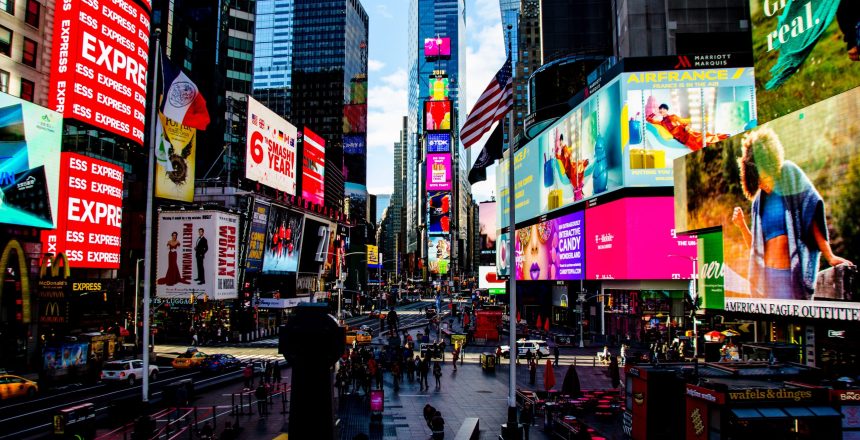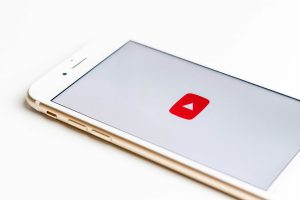Optimize Campaign Success with High Performing Banner Ads
The advertising industry has been perpetually shifting towards a digitally dominated field for years. More and more companies are opting for digital media ad space as opposed to traditional media, where they can reach their “always-on” consumers.
Why is it important to follow the standards?
In order to maximize the success of advertisements placed on the web, creative directors and designers alike are following a standardized set of advertising specifications. The ad specs will ensure that your advertisements are showing up on websites and in newsfeeds clean, crisp, clear, and up to your standard of perfection. When your audience clicks on the advertisement, it is highly unlikely that the image will blur or pixelate. Additionally, ad specifications ensure that your creative will upload properly to the site you are advertising on without distorting the creative.
What ad specs are most popular?
We’re going to discuss a few different ad specs for desktop, tablet, and mobile. For desktop and tablet, both 728×90 banner ads, and 300×250 banner ads perform quite well. On mobile, advertisers often choose 320×50 and 300×50 banner ads728×90 Desktop and Tablet
What does it look like?
What are the details?
In the industry, 728×90 ads are often referred to as both “banner ads” and “leaderboards.” True to name, leaderboards are often placed at the top center of a webpage. Naturally, this is where the ad performs most successfully. When placed at the top of the page, an eye-catching and appealing advertisement will catch a visitor’s attention immediately, as it is directly in their line of vision. As the ad is moved down the page, and inevitably below the fold, the ad is less successful.
Ad space for 728×90 ads is widely available, as it’s a popular size choice among websites, and in turn, designers. Leaderboards can be placed on both apps and websites, where they perform nicely on desktop and tablets.
Due to their popularity, the price of 728×90 ads tends to rise, making ad placement relatively expensive. The price of ad space will decrease if purchased below the fold, however this significantly decreases advertisement impressions. Placing an ad below the fold runs the risk of the webpage visitor never even seeing the advertisement, let alone engaging with it.
728×90 ads can be quite versatile; most sites will accept a variety of file formats for the advertisement, and the creative can be either static or dynamic. When designing creatives, it is important to integrate content that fits a wide and short format well, as 728×90 ads will not fit all graphics properly within its dimensions.
300×250 Banner Ads – Tablet & Desktop
What does it look like?
What are the details?
Another popular choice by advertisers, 300×250 banner ads are known as “medium rectangles.” Typically, inventory is good and pricing can get competitive for 300×250 ad space.
Like leaderboards, they usually run on websites on both desktop and tablets, and are enabled on some apps compatible with tablets. Also similar to 728×90 ads, medium rectangles can generally be uploaded in a variety of file formats, and design can be either static or dynamic.
The difference between leaderboards and medium rectangles comes into play in terms of creative aesthetic. With more square like dimensions, there is a lot of space to fill with the advertisement, and designers have more flexibility when making creatives. Additionally, the creative should stand out, as it will be running alongside content on webpages, not centered above it. Again, 300×250 ads placed above the fold will almost always outperform creatives placed below, so keep that in mind when buying ad space.
320×50 & 300×50 Banner Ads – Mobile
What does it look like?
What are the details?
320×50 and 300×50 ads are the leaderboards of mobile. These two ad sizes are optimized to fit larger smartphone screens at either the top of the screen or the bottom. Ads can be placed on mobile websites or integrated into apps.
Again, since we’re discussing some of the highest performing ads, 320×50 and 300×50 mobile banners have the potential to get expensive. Advertisers need to weigh the effectiveness of the ad against the price when determining what platforms to run campaigns on.
In terms of the creative, mobile leaderboards provide the smallest dimensions to design on. Since the ad will be viewed on a small, handheld device, designers must consider the fact that text needs to be large enough to read, and any call-to-action buttons need to be large enough for a thumb to tap.
Put it all together….
What ad spec should I use for my campaign?
The answer to this question cannot be easily pinpointed. Ideally, advertisers need to identify their target audiences and reach them where they are consuming media. If their audience is active on a desktop, tablet, and mobile, provide a seamless multi-channel campaign by purchasing ad space in all of the above ad specs. Interacting with customers across multiple devices creates a memorable user experience and strong brand recognition.
Remember, though these advertisement specifications perform well, website designers should integrate ad space that complements the page. There are many more advertisement dimensions to choose from. However, because other sizes are less popular, they may require more work on behalf of those designing the creatives, and draw less revenue in turn. There are many pros and cons to consider on both the buying and selling sides of advertising.
What else do I need to know?
Regardless of the ad type, the Interactive Advertising Bureau advocates that all advertisements abide by a few standards.
- Always clearly disclose that the advertisement has been paid for, whether it contains traditional promotional content or not.
- Create an advertisement large and visible enough that the consumer can easily tell that it is an ad, not part of the webpage publisher’s content. This should be taken into account relative to the device that the advertisement is placed on.
Many advertising agencies or website publishers will include an extended list of prohibited characteristics to be mindful of when creating advertisements. An example is below:
Prohibited Characteristics
- Promoting online gambling (paid, free, or gateway to paid gambling; brick and mortar gambling is acceptable)
- Depicting or delivering libelous, violent, tasteless, hate, defamatory, or illegal content
- Portraying partial or complete nudity, pornography, and/or adult themes and obscene content
- Spawn pops, simulate clicks, contain malicious code, viruses, or executable files of any kind
- Delivering surveys via floating layers, pop-ups or pop-unders
- No explicit language, no spelling mistakes, no simulated expletives (e.g., #$%!)
Extended Guide
For more on information on ad specs, download our extended Display Creative Specifications guide.




